New Designs for School
Learner-Centered Spaces for Innovation and Sustainability
Topics
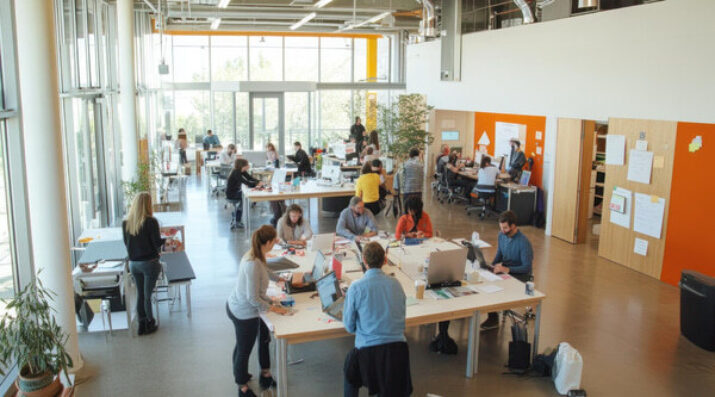
We’ve all had the experience of truly purposeful, authentic learning and know how valuable it is. Educators are taking the best of what we know about learning, student support, effective instruction, and interpersonal skill-building to completely reimagine schools so that students experience that kind of purposeful learning all day, every day.
Student-centered learning can be supported by healthy, safe, and sustainable environments that allow active participation, collaboration, flexible grouping, and tech integration.
Innovations in teaching and learning have had little impact on modern space planning and school architecture. We know that students and teachers do better when they have variety, flexibility, and comfort in their environment. This series examines how next generation learning spaces impact the learning experience for students and their teachers. If you have the opportunity to design a new school building or renovate an existing building, or if you are interested in using space better in your school, this series can help ensure that the physical spaces in your building promote the skills students need to thrive and contribute to an ever-changing global society.
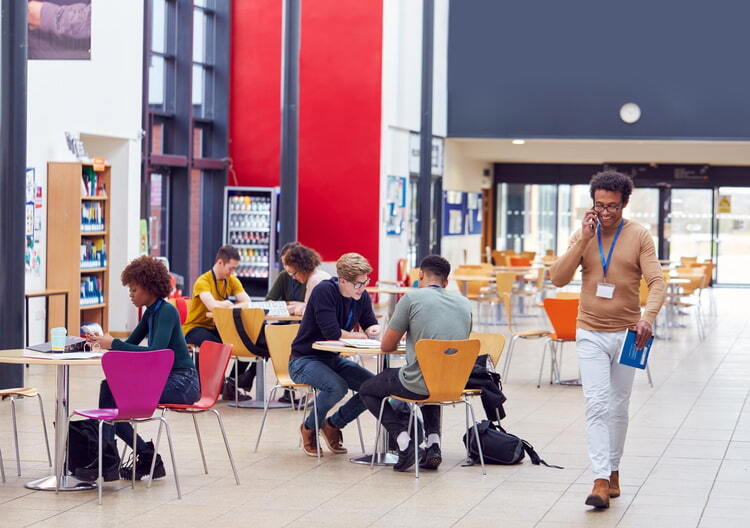
Credit: westock on Freepik
Learner-Centered Spaces
Learning pedagogy is shifting away from the traditional “teacher-focused” classrooms. Those classrooms were designed to provide a prescribed package of knowledge where the teacher acts as the primary source of knowledge, essentially “lecturing” from the front of the classroom. Instead, individualized “learner-centered” environments allow students to learn by doing, analyzing data real time, collaborating with classmates to construct knowledge, and benefitting from interactive learning.
These design spaces reimagine the pedagogy in culturally-responsive ways where the teacher facilitates learning by guiding students with a more student-centered approach to discover knowledge themselves, encouraging active participation and discussion. Learning modalities can be used to facilitate individual or multiple-sized group activities. Authentic, relevant, and complex opportunities utilize inquiry-based and project-based methodologies to build critical thinking, reasoning, and collaboration skills.
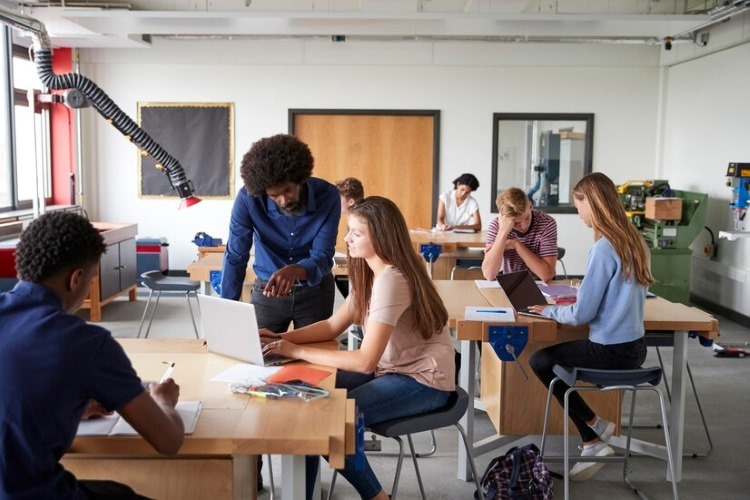
Credit: westock on Freepik
Therefore, designing an agile learning environment provides the opportunities needed for the flexible learning modalities required. These initiatives would not necessarily get rid of classrooms, but instead redesign and refurbish them to operate as “learning studios” and “learning suites” alongside common collaborative learning zones reclaimed from hallways that vastly expand available educational space and allow better teaching and learning (Nair et al., 2011).

Credit: Photo of e3 Civic High in San Diego, courtesy of NGLC
Informal Seminar Learning Stairs
The stairs in schools might be one of the most underestimated spaces when it comes to learning. By transforming this typically overlooked area into a more dynamic, interactive part of the school, students can benefit from the casual, yet meaningful moments of informal learning that take place there. The key is to think outside the classroom and see these spaces as opportunities for learning in a more fluid, spontaneous context. The stairway is a natural "transition zone" between spaces, and students often engage in quick moments of reflection during this transition.

Credit: gzorgz on Freepik
Informal Seminar Learning Stairs allow learners to determine the most appropriate learning space for their learning style or they are facilitated by teachers to provide structured assemblies to encourage students to have conversations about their learning. Large group activities may include whole group collaborative learning, individual student work presentations, focused discussion and research, and break-out discussions. Schools can also integrate reflective prompts on the walls of stairwells or create opportunities for students to jot down thoughts or ideas on interactive boards. These moments can lead to deeper thinking about what they are learning in class and allow them to process concepts informally.
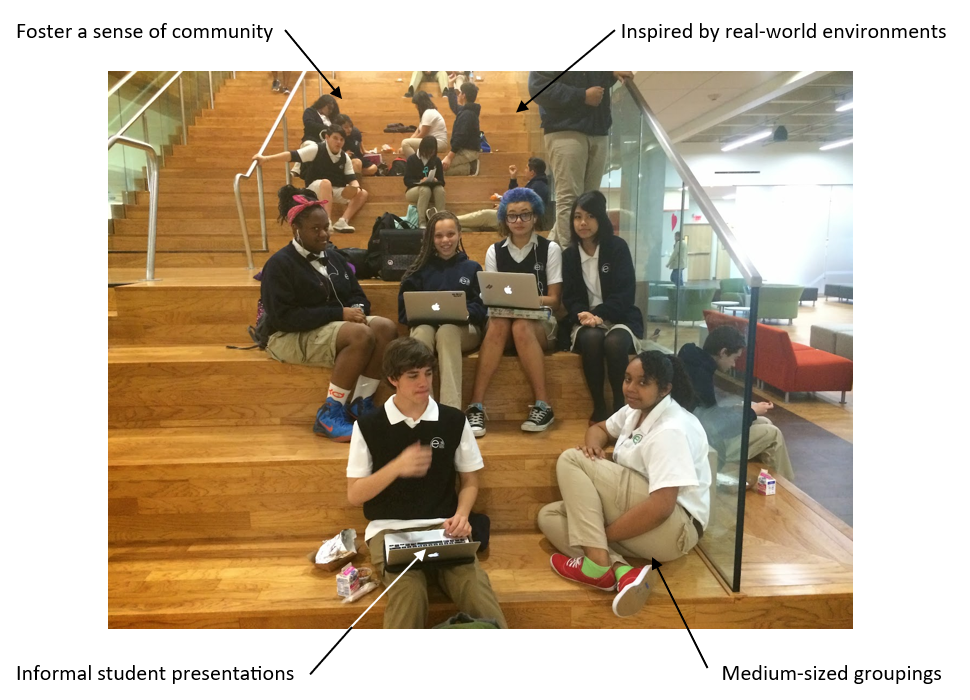
Credit: Photo of e3 Civic High in San Diego, courtesy of NGLC
Innovative Toolbox for Learning
An innovative toolbox for learning is all about providing students and educators with a diverse range of resources to make the learning process engaging, personalized, and collaborative. By integrating these tools into the common areas, schools can foster creativity, enhance critical thinking, and prepare students for the demands of the 21st century. The right combination of technology, hands-on resources, and pedagogical strategies can create a dynamic learning environment where students thrive and develop skills that will serve them well throughout their lives.
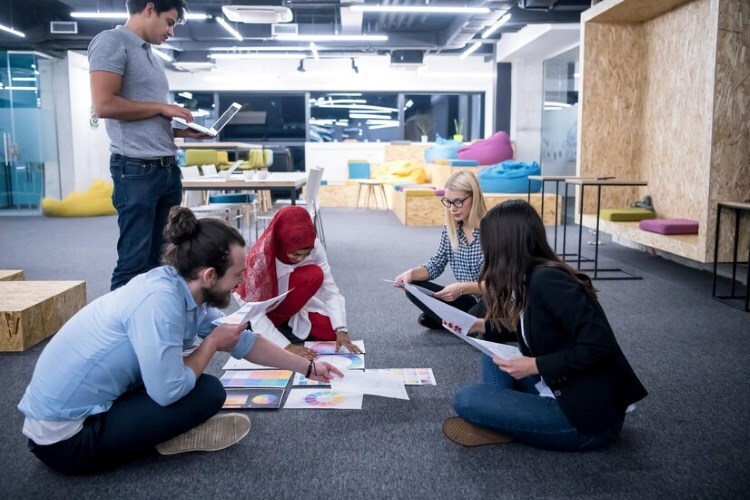
Credit: dotshock on Freepik
Innovative learning happens when consistent pedagogical initiatives support creative and intellectual pursuits. A culture of innovation encourages life-long learning for the individual through a collaborative process. Innovation is an important community investment that fosters next generation learning by believing that positive change happens collectively and is sustained through the education of a student. The innovation toolbox has tools to support project-based learning initiatives.
An innovative toolbox for learning in schools is a collection of modern, versatile tools and resources that can empower both students and teachers to enhance the learning experience. This toolbox isn't just about physical objects; it's about integrating digital and actual tools, strategies, and methods that support creativity, problem-solving, collaboration, and critical thinking.
In a flipped classroom model, students learn new content at home (via videos or readings) and use class time for hands-on activities and discussions. This enables teachers to create interactive, self-paced learning experiences for students. These platforms allow students to pause, rewind, and replay content to fully understand concepts before applying them in class.
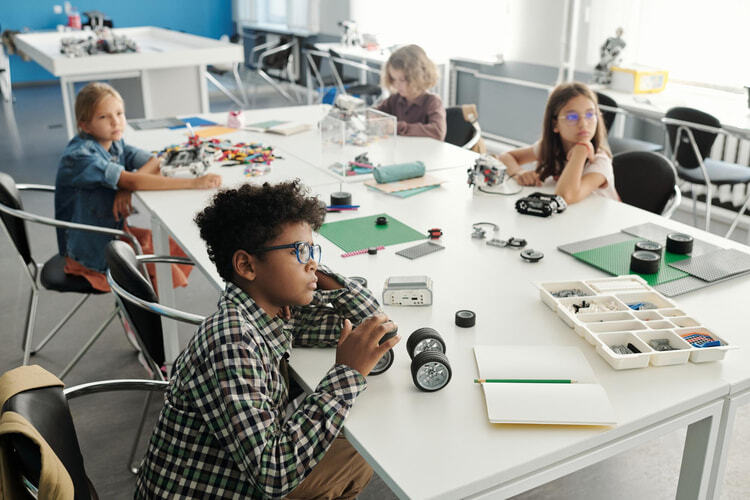
Credit: pressmaster on Freepik
Environmental Sustainable Learning Spaces
Leveraging sustainable strategies and technologies minimizes a school campus’ environmental footprint and maximizes operational savings over time. By making environmental sustainability part of everyday learning, schools help to cultivate a generation of individuals who are not only knowledgeable about the environment but also equipped with the tools and motivation to contribute to a sustainable future.
Environmental sustainability education in schools is crucial for raising awareness and fostering responsible attitudes toward environmental conservation and climate action from a young age. By integrating sustainability principles into curricula, students not only learn about the planet’s challenges but also how they can make a positive impact.
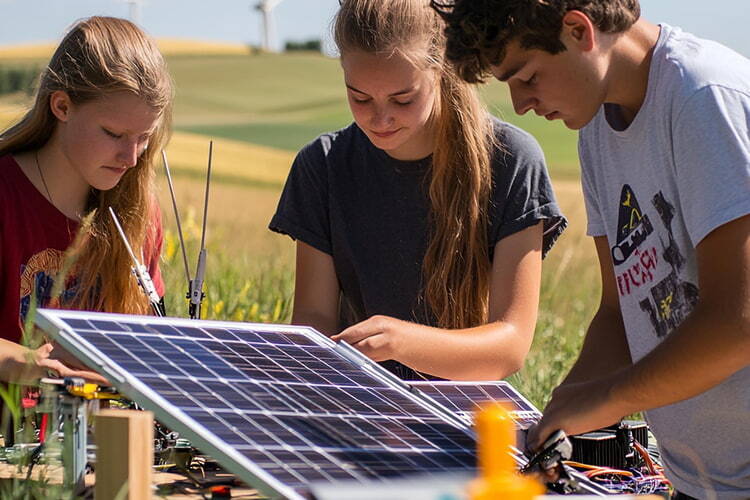
Credit: NextGenLab on freepik
Unique and innovative strategies include rainwater harvesting, living walls, vegetative roofs, solar/photovoltaic labs, transparent solar canopies, insulated concrete form (ICF) envelope, and rainscreens. Piloting them allows a community to analyze their effectiveness with energy modeling and life-cycle costs analyses. Once these strategies have been implemented, they can assist in performance commissioning, user behavior, and Operations and Maintenance (O+M) training.
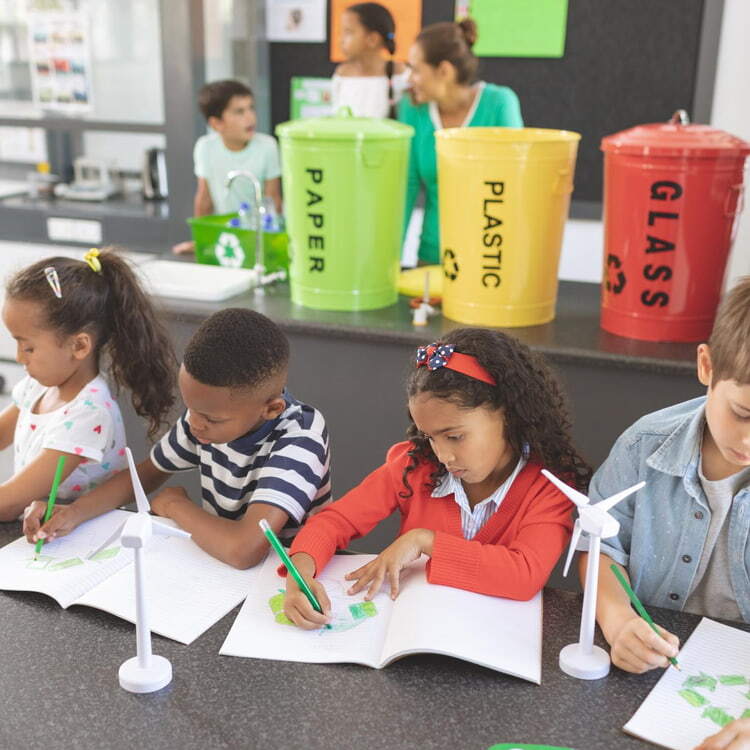
Credit: Wavebreak Media on Freepik
Holistic sustainable design strategies involve LEED-Certified projects, Net Zero Energy Schools, Green Globes Certification, IgCC compliance, and tracking materials to avoid those on the ILFI’s Red List with the goal of healthy and safe environments. An inspiring, healthy, and student-centered educational environment is a teaching tool for environmental literacy, both inside and out.
Here are several approaches to teaching environmental sustainability in schools:
A. Curriculum Integration
Science Lessons: Students can learn about ecosystems, biodiversity, climate change, and renewable energy sources. Practical activities like creating models of renewable energy systems (e.g., solar panels or wind turbines) or studying environmental science case studies can make these topics more engaging.
Social Studies & Geography: Students explore the interconnectedness of human societies and the environment, understanding global environmental issues such as deforestation, pollution, and resource management.
Math & Technology: Sustainability can be connected to mathematics and technology by analyzing data about resource consumption, waste production, or the efficiency of green technologies.
B. Hands-On Activities
School Gardens: Growing food or learning about local ecosystems allows students to understand the importance of sustainable agriculture and the food system. School gardens teach them where food comes from and encourage eco-friendly practices like composting and water conservation.
Recycling Programs: Schools can establish recycling programs, allowing students to engage in the process of waste reduction and resource conservation while also understanding the environmental benefits of recycling.
C. Climate Change and Global Action
Climate Change Projects: Students can research local or global impacts of climate change and brainstorm solutions, connecting their findings to real-world policy changes, community actions, or technological innovations.
Environmental Awareness Campaigns: Students can initiate campaigns to raise awareness on issues like reducing plastic use or promoting clean energy alternatives within the school or their communities.
D. Interdisciplinary Learning
Arts and Sustainability: Art can be used to communicate sustainability issues in creative ways—such as creating artwork from recycled materials, or through performances that raise awareness about environmental issues.
Literature: Reading stories about nature, environmental activism, or the impact of pollution can help instill empathy for the planet and its future.
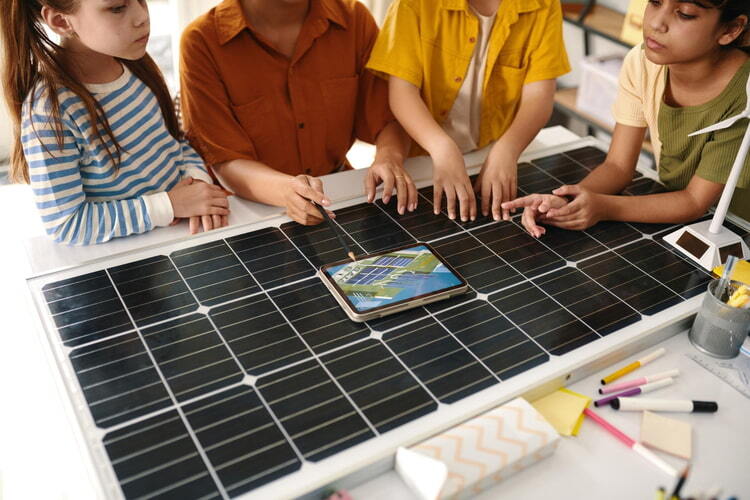
Credit: dragonimages on Freepik
E. Student-Led Sustainability Initiatives
Green Clubs or Eco-Committees: Schools can form student-run environmental clubs to initiate sustainable practices, such as energy-saving measures, tree planting campaigns, or raising funds for eco-projects.
Sustainability Projects: Students can develop personal or group sustainability projects—like creating a sustainable product or starting a green initiative in their local community.
F. School Infrastructure
Energy Conservation: Schools can set examples by implementing energy-efficient lighting, heating, and cooling systems, using renewable energy where possible, and reducing waste and water consumption.
Sustainable Buildings: Some schools use green building designs, such as using eco-friendly materials and implementing water-saving techniques, to show students how sustainability can be integrated into everyday life.
Photo at top by vanzerim on Freepik.




